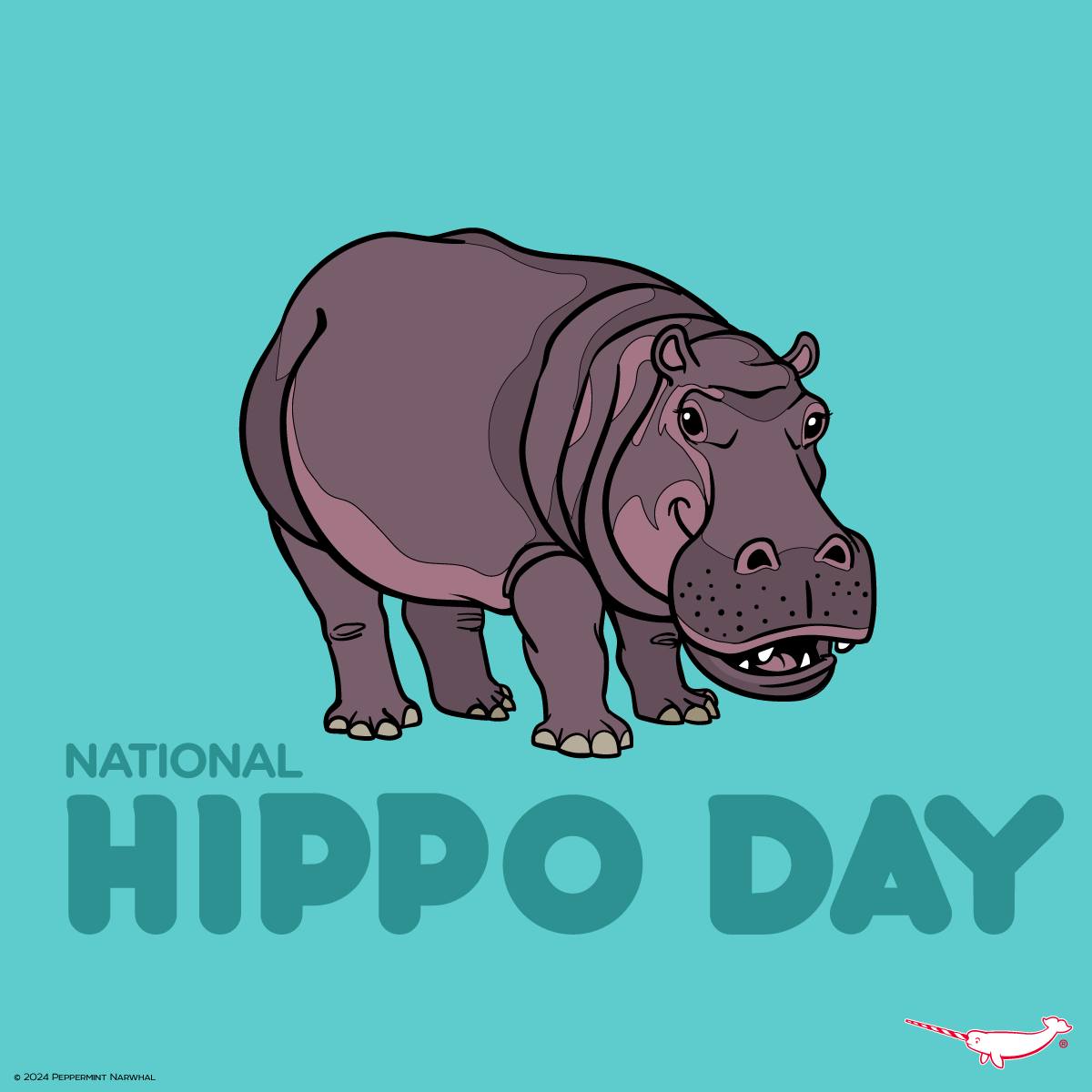– Uncover the fascinating Life and ecological impact of the Common Hippopotamus.
– Dive into the quirky and lesser-known behaviors of hippos.
– Explore how hippos shape their environments and support biodiversity.
– Discover the challenges facing hippos and how conservation efforts aim to protect them.
Happy National Hippo Day to all fellow wildlife enthusiasts and curious minds! Today, we embark on an extraordinary journey into the world of one of our planet’s most intriguing and charismatic mega-fauna, the hippopotamus. These water-loving giants are placed in our imaginations along with the ecosystems they inhabit. So, grab your safari hats, and let’s plunge into the depths of hippo knowledge, uncovering facts as enormous and profound as the creatures themselves.
The Common Hippopotamus (Hippopotamus amphibius), or simply ‘hippo,’ is a creature of both land and water. Despite their hefty appearance, hippos are remarkably agile in their aquatic habitats. This dichotomy of awkwardness on land yet grace in water presents our first fascinating paradox about these mammals. But, as we’ll see, hippos are full of surprises.
**A Day in the Life of a Hippo**
Hippos spend much of their day submerged in rivers and lakes to keep their massive bodies cool under the scorching African sun. However, as dusk falls, these seemingly docile giants embark on land to graze. On these nightly forays, their role as ‘ecosystem engineers’ truly comes to light. Hippos systematically fertilize water bodies by consuming vast amounts of grass and returning to their aquatic homes. The nutrient-rich waste they leave behind is a boon for aquatic plants and the various fish and invertebrates that depend on these plants for survival.
But their influence doesn’t end there; hippos create pathways through vegetation as they travel to and from feeding grounds, shaping the landscape and providing access for smaller creatures who might not be able to forge such paths themselves. In the water, their movements carve out channel water circulation, benefiting the overall health of the aquatic ecosystem. It’s a beautiful symphony of creation, with the hippo as its unwitting conductor.
**Secrets of the Hippo’s Yawn**
One of the most iconic images of a hippo is that of its massive jaws wide open in what looks like a big pile. It’s tempting to think of this as a sign of sleepiness or boredom, but the reality is far more interesting. This behavior is a display of dominance and aggression. It’s the hippo’s way of saying, “Look how big my mouth is, and notice all the teeth? Better think twice before coming any closer.” This fascinating blend of vulnerability and intimidation is another peel of the hippo’s complex behavioral layers.
**Not Just a Singer in the Mud**
Many assume that the hippo’s Life revolves solely around its time in the water. However, hippos are also known for their vocal abilities, emitting a series of grunts, groans, and even bellows that can be heard above and below water. These vocalizations are crucial for communication within the pod, helping to establish social structure and coordinate movements. It’s a vivid reminder that for all their physical prowess, hippos rely heavily on their ability to connect for survival and well-being.
**The Challenges Ahead**
Despite their significant role in the ecosystem and legendary status in our cultural lore, hippos face several challenges. Habitat loss due to expanding human settlement and agricultural development severely threatens their way of Life. Additionally, hippos are hunted for their meat and ivory-like teeth, adding pressure to declining populations.
Conservation efforts focused on habitat protection, anti-poaching measures, and community engagement are vital to ensure these magnificent animals continue to thrive. By supporting these initiatives and spreading awareness about the importance of hippos to their ecosystems, we can all play a part in preserving their future.
**A Call to Action**
As we celebrate Happy National Hippo Day, let us not only marvel at the sheer size and unique habits of the hippopotamus but also recognize their critical role in maintaining health criteria.cal, let’s commit to learning more about these incredible animals and the efforts to protect them. By embracing our love and fascination for hippos, we can be motivated to take action and ensure that future generations will also have the opportunity to be enchanted by these remarkable creatures.
So, here’s to the hippos – the unlikely engineers of ecosystems, the fierce yet gentle giants, the water-loving grazers who remind us of the interconnectedness of Life. May their presence continue to enrich the wild landscapes of Africa, and may their story inspire us all to be stewards of the natural world. Happy Hippo Day!
*****
Source Description
Happy National Hippo Day!
We LOVE hippos! How about you?
Did You Know? – The Common Hippopotamus (Hippopotamus amphibius) is an ecosystem engineer. It fertilizes water plants in lakes and rivers by grazing on land and excreting wastes in the water. In addition, fish and other animals rely on the waste as an important food source. It also creates feeding paths on land and water channels that many species benefit from.
Shop www.peppermintnarwhal.com


